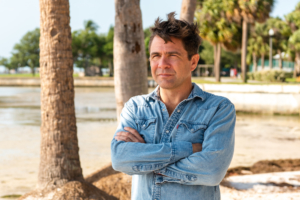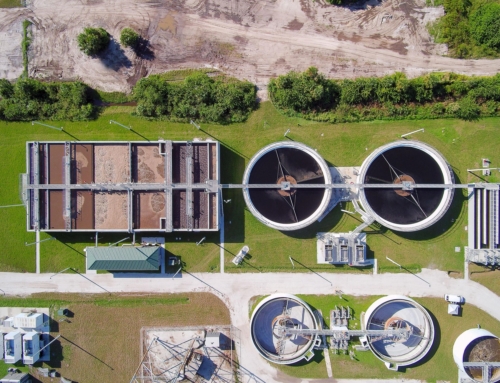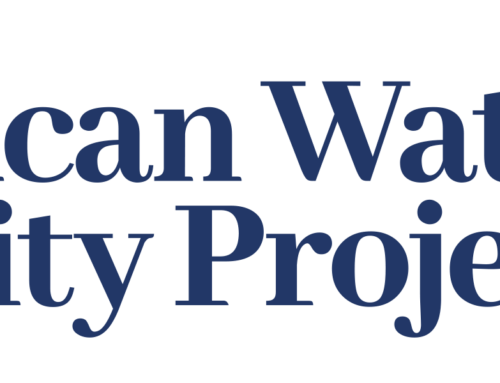Authored by the American Water Security Project’s Executive Director Dr. Brandon D. Shuler, ‘Lee County: Think big about wastewater treatment improvements’ originally appeared in the Naples News September 9, 2022.
Researchers with the Harbor Branch Oceanographic Institute (HBOI) recently completed a study – published in top-tier peer-reviewed journal – revealing the frightening extent to which sewage contamination is a major water-quality issue in the Caloosahatchee River basin. The study took place in North Fort Myers, where more than two thousand buildings rely on septic. An estimated 100,000 septic tanks leak in Lee County.

AWSP Executive Director, Dr. Brandon D. Shuler
That’s a dangerous problem. Septic tank effluent provides “superfood” for harmful algal blooms (HABs), including the dreaded red tides, blue-green Microsystis, and seagrass-smothering macro-algae species. Pathogens in sewage also threaten the health of humans and wildlife.
The four-year study relied on eight types of scientific analyses, including a type of forensic stable isotope analysis presented in a recent Supreme Court case where citizens successfully sued sewage polluters on Maui for killing a coral reef.
The HBOI team learned that approximately 80 percent of the roughly 2,100 septic tanks in North Fort Myers are located above the groundwater table. Climate-change-induced sea-level rise raised the groundwater table, and more intense rain events, often coupled with higher-than-normal high tides, causes frequent flooding and mobilization of pollution. Researchers concluded that, “groundwater and surface water in North Fort Myers are coupled and contaminated by septic system effluent, which is negatively affecting water quality and contributing to the maintenance and intensification of downstream HABs.”
County officials seemed to respond to the news by complaining about upstream pollution sources, some of which are being addressed thanks to ever-improving technologies that allow Florida’s farmers and ranchers to produce food and provide wildlife habitat while reducing water use, fertilizer application, and runoff.
Our own research team has worked all over the country on water-security issues, and rarely if ever is there one single culprit, which tempts leaders of communities with impaired waterways to point fingers at neighbors, even when something as dangerous as local sewage pollution is a problem. Finger-pointing isn’t good leadership. A determination to correct past mistakes while preventing the same or similar mistakes from occurring again is a hallmark of good leadership. Thus, we are encouraged by Lee County Manager Roger Desjarlais’ “pep talk” to Lee County commissioners. The News-Press quoted him as saying:
Everybody in the state of Florida is pointing at everyone else. And it really starts with an admission that part of this problem is ours.” You didn’t do it, commissioners. This was done I don’t know many years ago. All those septic tanks and the infrastructure that‘s been in place for the last 50, 60 years. It’s not your fault … but we own it.
As Mr. Desjarlais starts the planning process, we encourage planners to think holistically about water and energy. This news comes not long after the City of Fort Myers admitted that they may not be able to provide water for new development, at least not without drilling additional wells in a region where water sources are limited. “Wastewater” isn’t waste. It’s a resource that can be treated and recycled safely for ecological rehydration, irrigation, or even potable reuse.
If local governments create the capacity to capture and treat the water wasted by 100,000 septic tanks, they’ll also add a significant new water source to the growth equation.
Per energy, wastewater treatment is energy-intensive. Wastewater plants are also major emitters of greenhouse gases including methane, nitrous oxide, and carbon dioxide. There are examples of plants around the country that reduce air pollution, increase energy efficiency and reduce costs via heat-capturing technologies, by capturing methane emissions and using that gas to power the plant, and by adding solar voltaic systems. The Florida legislature just passed a bill allowing floating solar voltaic systems in manmade water bodies, including wastewater ponds. Solar panels could result in savings that allow for prompt repairs, upgrades, or even rebates.
Mr. Desjarlais is correct. We need to stop the finger pointing, and generate plans that represent a vision of resilient urban and suburban water infrastructure. Fortunately, there are many ways to finance such projects and numerous forms of government assistance to offset costs. We are happy to help identify them.
Dr. Brandon Shuler is the Executive Director of the American Water Security Project, based in St. Petersburg, Fl.





